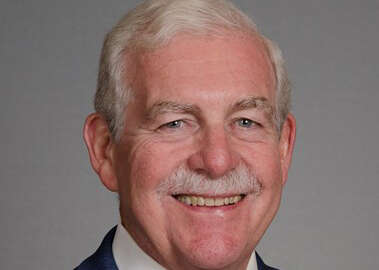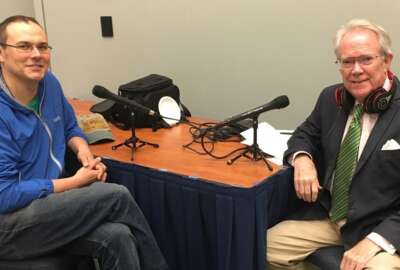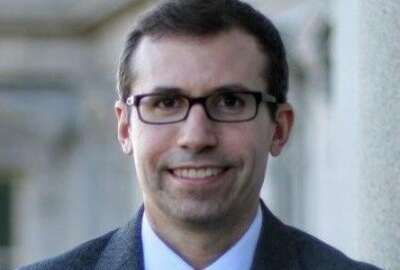
Act of God inspires Arizona’s move to cloud
Arizona CIO Morgan Reed is transforming the state's IT with cloud computing, after a devastating sand storm-generated computer outage.
Deus ex machina was a concept in classical Greek and Roman drama, literally “god from the machine”, whereby a deity was unexpectedly introduced, lowered from a crane, to save the day or decide the final outcome. Such irrational and unrealistic developments today are sometimes replications of this ancient spectacle.
One such act of God, as insurers might classify it, happened in Arizona. There, sand or dust storms are neither irrational nor unexpected but an event that measured mile high and 100 miles wide presented a certain peculiarity. The dust storm totally knocked out data center services for three days and as a result was a catalyst for the state Chief Information Officer Morgan Reed’s aggressive move toward cloud services.

I caught up with Reed at the Amazon Web Services (AWS) Public Sector Summit last month and more recently on Federal News Radio, part of the Federal News Network. We had a chance to explore his challenges and the progress he’s made.
Reed explained that upon his appointment Gov. Doug Ducey demanded that Arizona operate more like a business and Reed had his mandate. The state could no longer accept incremental improvements; a total transformation was required beginning with its technology component.
This aligned well with Reed’s rationale for accepting the appointment.
“What really drove me to the state is the opportunity to make a difference, to have an impact in the state and community I call home,” he said.
Arizona’s federated governance model
There are approximately 35,000 state employees in Arizona; about 1,500 are in IT, complemented by another 500 IT contractors.
“However, less than 10% of the IT head count actually reports into me. So we actually have a federated model,” Reed said.
He sets statewide strategy and policy, but he also approves funding, which he called a lever at his disposal. If an agency wants to spend $25,000 or more on software, hardware or services, it has to cross Reed’s desk. To facilitate this process, he created a group called Business Engineering that actually works with the agency customers, understands where they are now, what project success looks like, and how technology can be an enabler for their business.
Furthermore, any project over $1 million must be approved by the Information Technology Authorization Committee. This committee consists of private and public sector leaders some of whom are appointed by the governor, and all must be confirmed by the state Senate.
“Ultimately if an agency wants to try to go against our cloud first policy, or go against our statewide enterprise email system, we can rein those things in,” Reed said. “We try to have a balance. Let’s just say traditionally government hasn’t been as innovative and hasn’t been as forward thinking.”
So Reed brought in private sector individuals including a former GoDaddy colleague, who’s now the chief technology officer of Choice Hotels, as well as folks from Expedia and some who used to be at NetApp. He also complimented this group with non-state public sector representatives from county and city governments.
Related Stories
Such advisory committees, in particular ones with non-state members, are rare. I had them in Massachusetts and California while CIO and found them a great resource as well.
Moving to the cloud
Back to that apocalyptic dust storm. Arizona has been a beacon for data centers for decades because they don’t have earthquakes, floods or hurricanes.
“But we do have dust storms during the hot summer months, monsoon season,” Reed said. “So there was a wall of dust about a mile high, 100 miles wide [and] the winds of 40 to 50 miles an hour that lasted for hours.”
Having leveraged a sick building syndrome to facilitate Massachusetts’ data center consolidation, I was sympathetic to Reed’s experience.
The final result of that storm was a three-day outage to the state’s largest and oldest data center which also housed multiple agencies.
“It’s about a 40 year old building; we had citizens lining up outside the doors to get service because their line of business application was down. So that was the lesson learned,” he said.
The storm reinforced Reed’s perception that the state does not “do data centers, it is not one of our core capabilities and the private sector can do it better. Amazon, Microsoft, Google’s data centers are better than ours. So we decided to go cloud first and we’ve had a lot of success.”
AWS has been a significant partner in moving Arizona’s infrastructure to the cloud. “We’re also consolidating 30 different email systems with Google and G Suite and we have now 14 agencies modernizing their business applications on Salesforce,” Reed explained. This provides a modern front end, not only to employees, but also to citizens. “We’ve had a lot of success with various cloud technologies, and we don’t believe in writing custom code. We don’t believe in putting IT on servers in our basement just because on day one, that’s an easy thing to do.”
Latest Technology News
“We’re not asking what other states or cities or counties were doing. We were asking, what is the private sector doing to solve these problems? What are some things that are innovative?” he said.
Reed has even traveled to Silicon Valley, observed startups and asked himself, “How can we use this technology to solve government problem?”
What’s next on the agenda?
Reed intends to continue to modernize state applications. Arizona has another year left on its cloud migration, and is now moving away from 20 smaller server rooms. Under the governor’s sponsorship, Reed has a vision.
“If there’s another storm, if the lights go out in Phoenix, the lights don’t go out for our customers because we don’t have infrastructure that’s dependent on our power grid,” he said.
The state now has 1,000 services online, which is great progress from the 200 or so Reed inherited three years ago.
“Now we’re developing a mobile application to put those services in our citizens’ hands; government in your pocket, connected and interacting with government like they do with Amazon and others,” he said.
Copyright © 2025 Federal News Network. All rights reserved. This website is not intended for users located within the European Economic Area.









